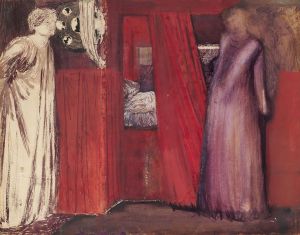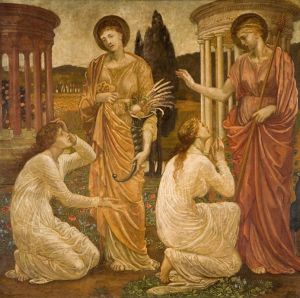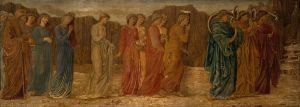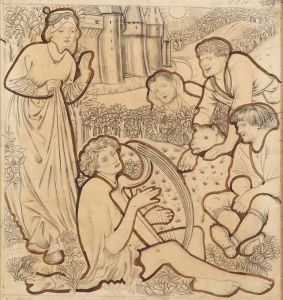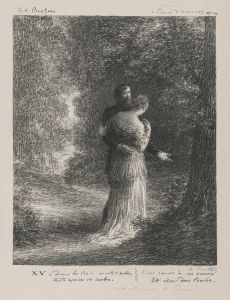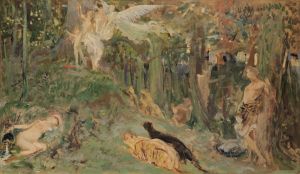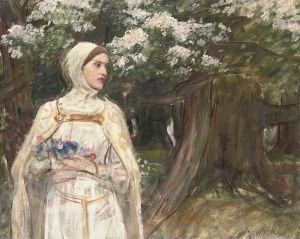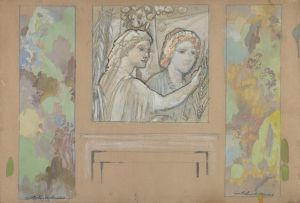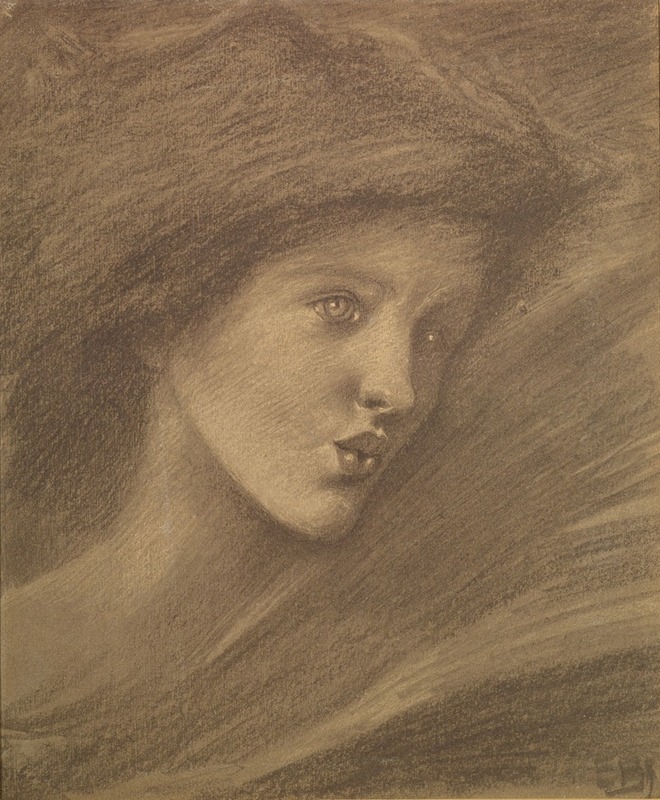
The Song of Solomon – Study of a Zephyr for ‘Sponsa de Libano’
A hand-painted replica of Sir Edward Coley Burne-Jones’s masterpiece The Song of Solomon – Study of a Zephyr for ‘Sponsa de Libano’, meticulously crafted by professional artists to capture the true essence of the original. Each piece is created with museum-quality canvas and rare mineral pigments, carefully painted by experienced artists with delicate brushstrokes and rich, layered colors to perfectly recreate the texture of the original artwork. Unlike machine-printed reproductions, this hand-painted version brings the painting to life, infused with the artist’s emotions and skill in every stroke. Whether for personal collection or home decoration, it instantly elevates the artistic atmosphere of any space.
Sir Edward Coley Burne-Jones, a prominent figure in the Pre-Raphaelite Brotherhood, created the painting "The Song of Solomon – Study of a Zephyr for ‘Sponsa de Libano’" as part of his exploration of biblical and mythological themes. Burne-Jones, known for his intricate and romantic style, often drew inspiration from literature, mythology, and religious texts, and this work is no exception.
The painting is a study for a larger work titled "Sponsa de Libano," which translates to "Bride of Lebanon." This title is derived from the Song of Solomon, a book from the Old Testament, which is a poetic dialogue between two lovers, often interpreted as an allegory for the relationship between God and Israel, or Christ and the Church. The Song of Solomon has inspired countless artists and writers due to its rich imagery and themes of love and beauty.
In "The Song of Solomon – Study of a Zephyr for ‘Sponsa de Libano’," Burne-Jones captures the ethereal and delicate nature of a zephyr, a gentle breeze personified in classical mythology. The depiction of the zephyr aligns with Burne-Jones's fascination with the interplay between the natural and the divine, a common motif in his work. The study likely served as a preparatory piece, allowing Burne-Jones to experiment with composition, form, and color before committing to the final version of "Sponsa de Libano."
Burne-Jones's technique is characterized by meticulous attention to detail and a preference for soft, flowing lines, which can be seen in the depiction of the zephyr. His use of color is subtle yet evocative, creating a dreamlike atmosphere that enhances the mystical quality of the subject matter. The study reflects Burne-Jones's ability to convey emotion and narrative through visual means, a skill that earned him a significant place in the Victorian art world.
The Pre-Raphaelite Brotherhood, of which Burne-Jones was a key member, sought to return to the detail, intense colors, and complex compositions of Quattrocento Italian art. They rejected the mechanistic approach that had come to dominate the art scene in the wake of the Industrial Revolution. Burne-Jones's work, including this study, exemplifies these ideals through its emphasis on beauty, nature, and spirituality.
While specific details about the creation and exhibition history of "The Song of Solomon – Study of a Zephyr for ‘Sponsa de Libano’" are limited, it is clear that the piece fits within Burne-Jones's broader oeuvre, which often explored themes of love, mythology, and the divine. His work continues to be celebrated for its aesthetic beauty and its ability to transport viewers to a world of myth and legend.
Burne-Jones's influence extended beyond the Pre-Raphaelite movement, impacting the development of the Symbolist and Aesthetic movements. His legacy is preserved in numerous collections, including the Tate Britain and the Birmingham Museum and Art Gallery, where his works continue to be admired for their beauty and depth.





